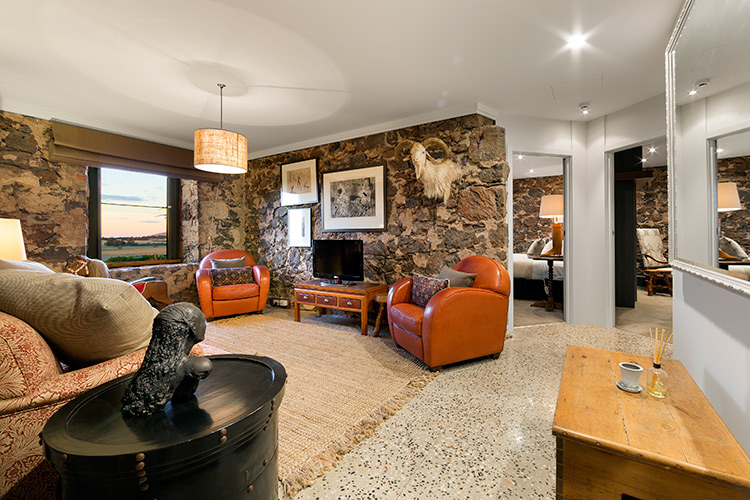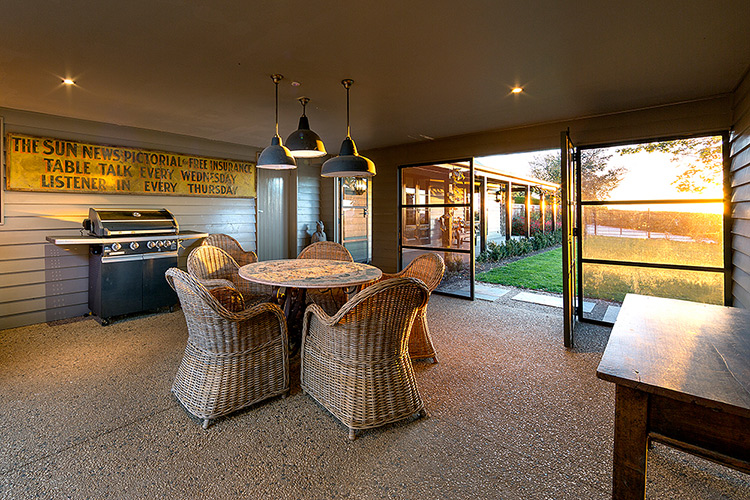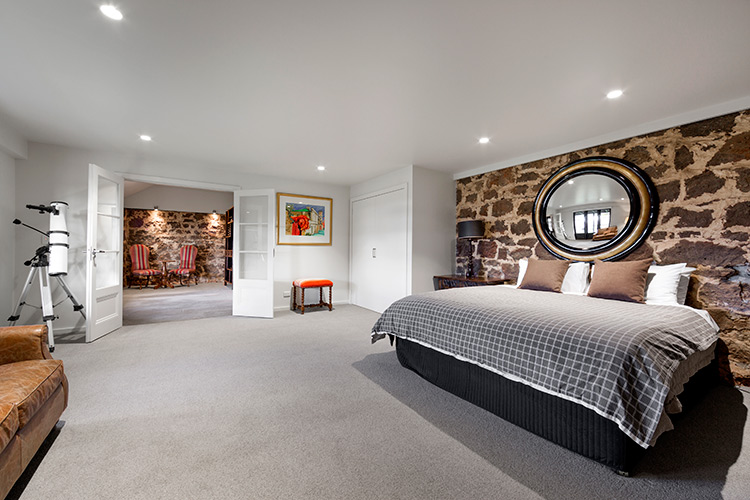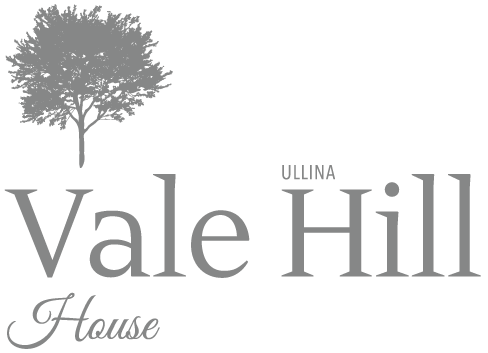Vale Hill today comprises four bedrooms, three bathrooms, two kitchens, double-height entrance hall, multiple dens, lounge rooms and entertaining areas, as well as a 160 year-old wine cellar, two-car garage, and a separate semi-self-contained apartment in the barn.
When it was first built, however, it was a rather more modest, although still imposing, two-storey house constructed from bluestone, fieldstone rubble and handmade brick. It was built for Scottish migrants Peter and Janet McRorie, who had arrived in Victoria that year.
Gold had been discovered in the region only a year before, and from Bendigo to Ballarat miners were flooding in. Peter McRorie, by trade a weaver and stonemason, had been hired to manage a new gold mine, situated nearby. Today the white quartz-rich mullock heaps of the long-abandoned mine dominate the paddock opposite the property.
The McRories lived at Vale Hill until they both died, just three months apart, in 1895. They are buried together in nearby Smeaton cemetery. Their headstone reads “They were lovely and pleasant in their lives and in their death they were not divided”.
Through the twentieth century, the mining industry gave way to farming. The rich volcanic soil of the plain provided the perfect conditions for wheat, sheep and cattle ventures – and, indeed, continues to do so.
After the McRories, Vale Hill was acquired by Frederick and Eve Toose. Photographs from the 1920s show the couple proudly showing off their new car in the driveway next to the house. Toose descendants still farm the land in the district today.
Vale Hill stood proud in the landscape until 1978, when tragedy struck in the form of a fire that destroyed the property, leaving only four badly scarred walls and a trio of chimneys standing.
The ruins of the old McRorie-Toose home became a local landmark for the next 30 years, until the property was purchased by the current owners in 2005 and its extraordinary resurrection commenced.



Today the remaining walls form the core of a much larger house. The stocky lintels, window and door frames, destroyed in the fire, have been reinstated using aged hardwoods. Sashless windows bring ease and efficiency while referencing the nineteenth century originals.
Instead of a replacement wood-beam ceiling, the bluestone walls are topped by a beautiful glass surround – flooding these originally shadowed spaces with natural light – hanging beneath an expansive metal roof. The roof itself is supported on vertical steel H-beams, which form part of the internal aesthetic.
The core section of the house contains the master bedroom complex, which comprises the bedroom itself (with views across the plain to Mt Kooroocheang), en suite bathroom, dressing room and self-contained den and study. It also contains two further spacious guest bedrooms, and a second bathroom with spa.
The area is climate-controlled through split-system units, under-floor heating and working fireplaces.
At the rear of the bluestone core is the original wine cellar, its walls and vaulted ceiling made from multiple layers of handmade bricks. Beautifully cool even on the hottest of summer days, the cellar has storage for more than 500 bottles.
The entrance to Vale Hill adapts the ruins of the original foyer, with today’s front door opening into a space defined by bluestone and brick walls that still show the scars of the 1978 fire. The entranceway today soars to a light-filled double-height apex. A steel staircase leads up to kitchen, dining and entertaining areas – which themselves link back to the bluestone core by means of a steel and glass internal bridge.
The expansion and progressive adaptation of Vale Hill has been a 10 year project that has involved the combined skills and insight of the owners – both of whom are experienced property developers and award-winning hoteliers, and one of whom is a former Master Builder of the Year – together with South Yarra’s respected Centrum Architects, and the late interior designer, Stuart Rattle.
The project is now complete, with the owners now planning to turn their style and good taste to transform another historic property in the region.



At Vale Hill, what has been hidden in and around the house is every bit as important – and impressive – as what’s on show.
The entire house is serviced by a C-bus electrical system, featuring television and Cat-5 data points throughout. There is even – uniquely for the area – an NBN connection, along with two phone lines.
Power is augmented by 4.8kw solar panels on the roof of the barn. The house also features electrically operated blinds, remote controlled garage doors, and a solar-powered front gate. There is a sophisticated security monitoring system in the house and grounds, which can be operated via mobile phone or other smart device.
To say that Vale Hill house is unique is, for once, not an overstatement. One of its most remarkable characteristics, however, is that for all its modern amenities, size and luxury appointments, it blends harmoniously into its environment. Lacking nothing, it remains from the outside pleasingly understated.
In significant degree, this is because it is surrounded by one of the most remarkable gardens in Victoria.







